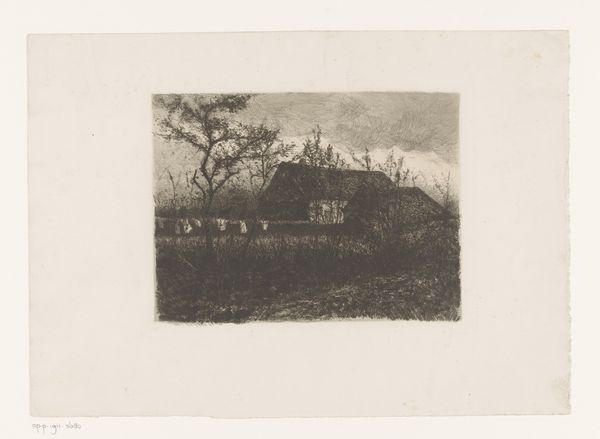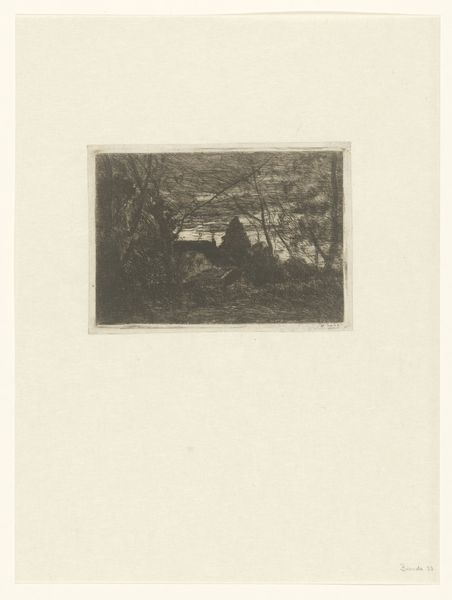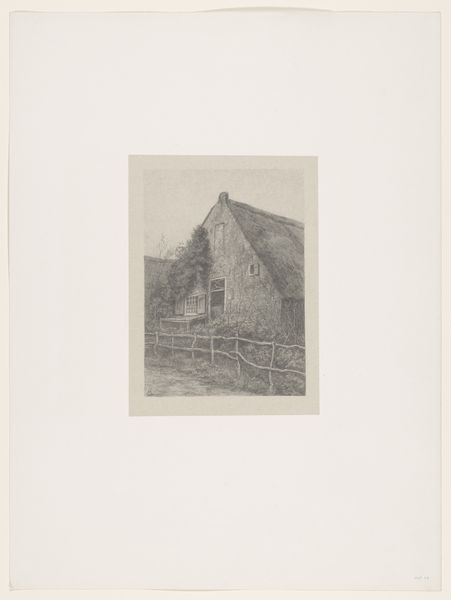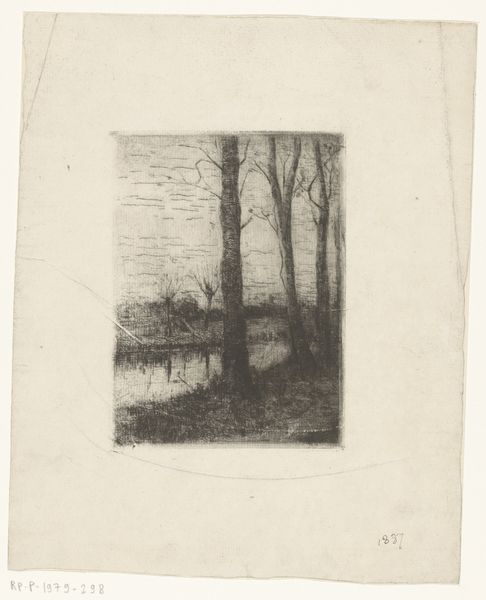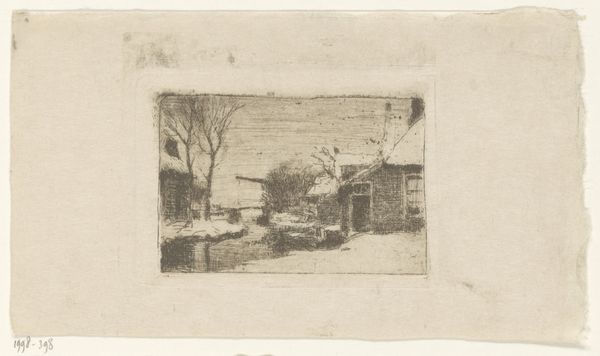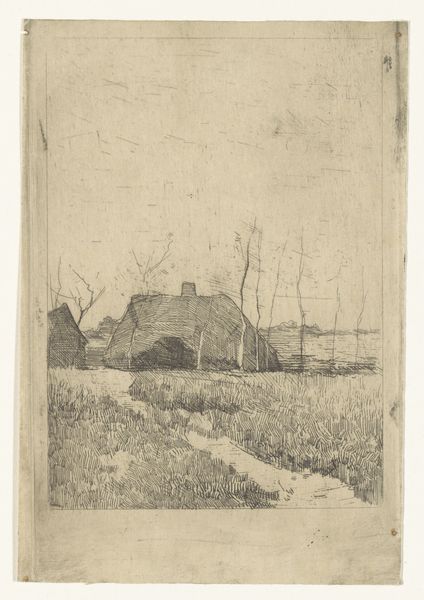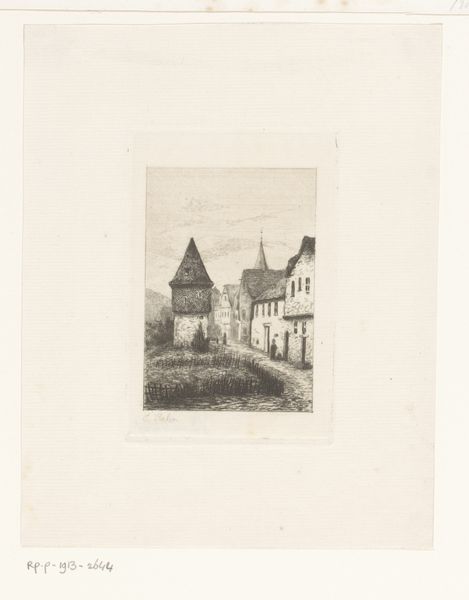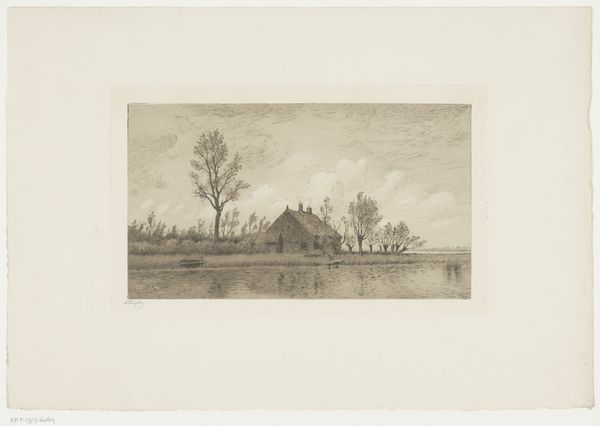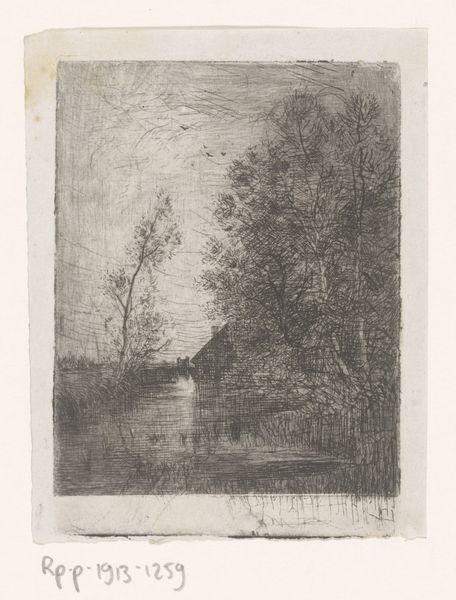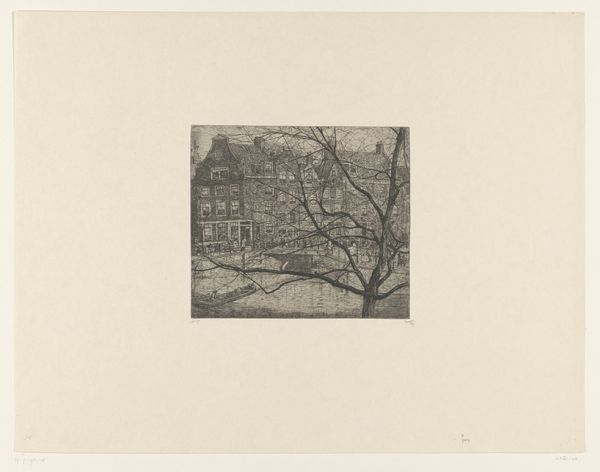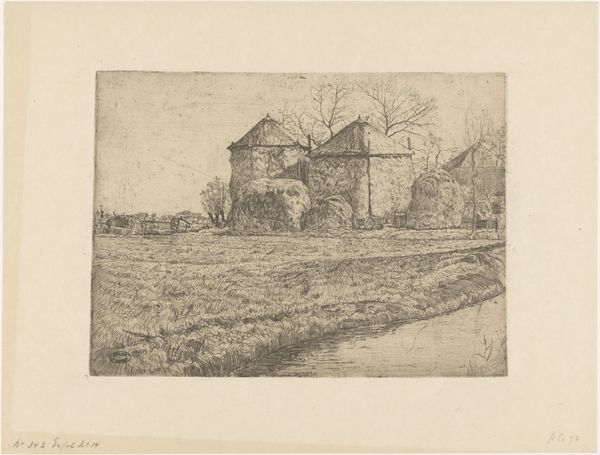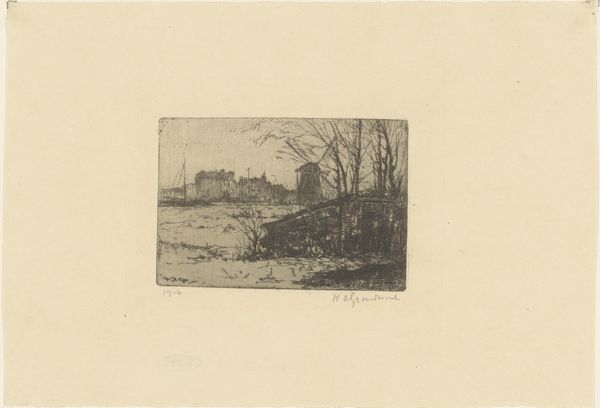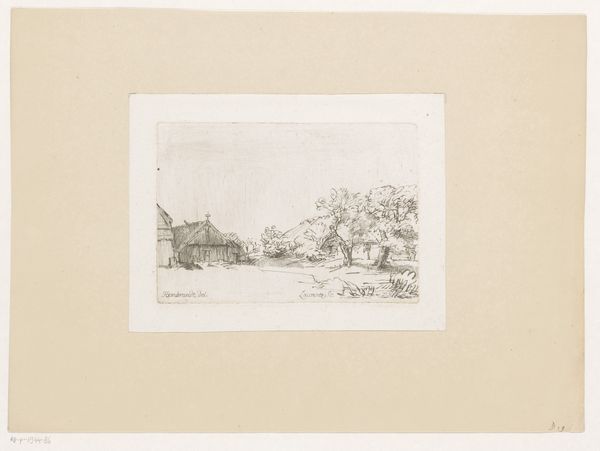
drawing, etching, paper
#
pencil drawn
#
drawing
#
light pencil work
#
etching
#
pencil sketch
#
landscape
#
paper
#
realism
Dimensions: height 198 mm, width 138 mm
Copyright: Rijks Museum: Open Domain
Editor: This etching, titled "Dorpsgezicht," or "Village View," was created by Jan Veth in 1886. It’s currently held at the Rijksmuseum. I find the composition really interesting; the contrast feels so muted. What do you see in this piece, considering its context? Curator: I see a potent commentary on the social landscape of the late 19th century. The artist presents a village scene that feels stark and somewhat melancholic. Etchings, during this period, often served as accessible tools to depict and disseminate social realities. This muted quality is, perhaps, reflective of the quiet struggles of rural life. Consider, also, the location – a village. What social strata are foregrounded and conversely, obscured by this depiction? Editor: That’s interesting! I hadn’t thought about the social commentary aspect so directly. So you think the "muted quality" reinforces that reading, emphasizing the ordinary, even invisible lives in the village? Curator: Precisely. And furthermore, who has the agency to represent these scenes and whose gaze is being reflected in the creation and interpretation of such imagery? The village, often idealized, is presented here without romanticism, almost as a stage for a quiet, unseen drama. The choice of etching, the 'pencil-drawn' effect also brings a personal quality. Don't you think? Editor: Yes, it feels very intimate and understated. Almost like a memory, rather than a statement. Thank you! I now have a new appreciation for this etching and its complexities. Curator: Indeed. It demonstrates that art can be both aesthetically pleasing and socially critical. We've both learned something by thinking intersectionally.
Comments
No comments
Be the first to comment and join the conversation on the ultimate creative platform.
